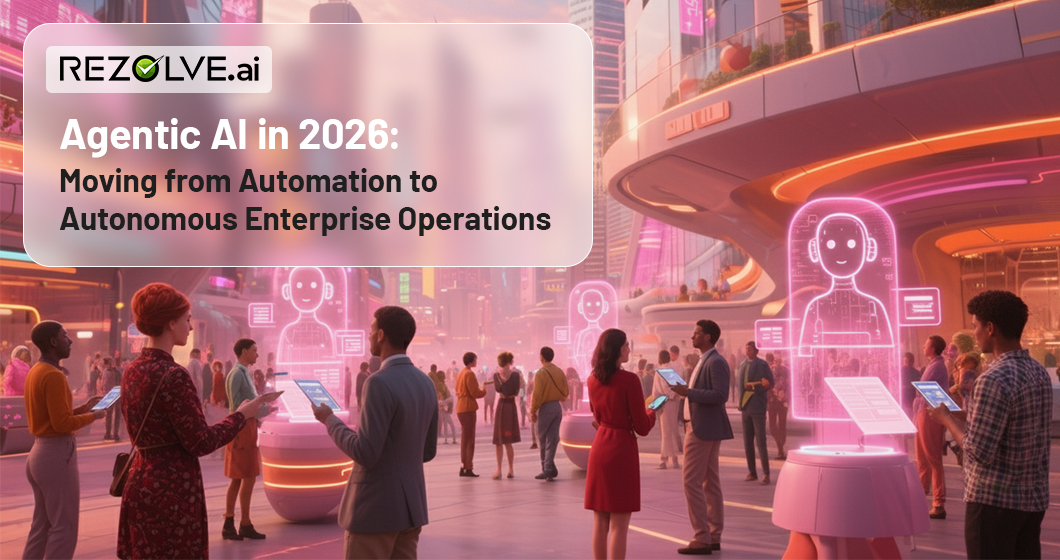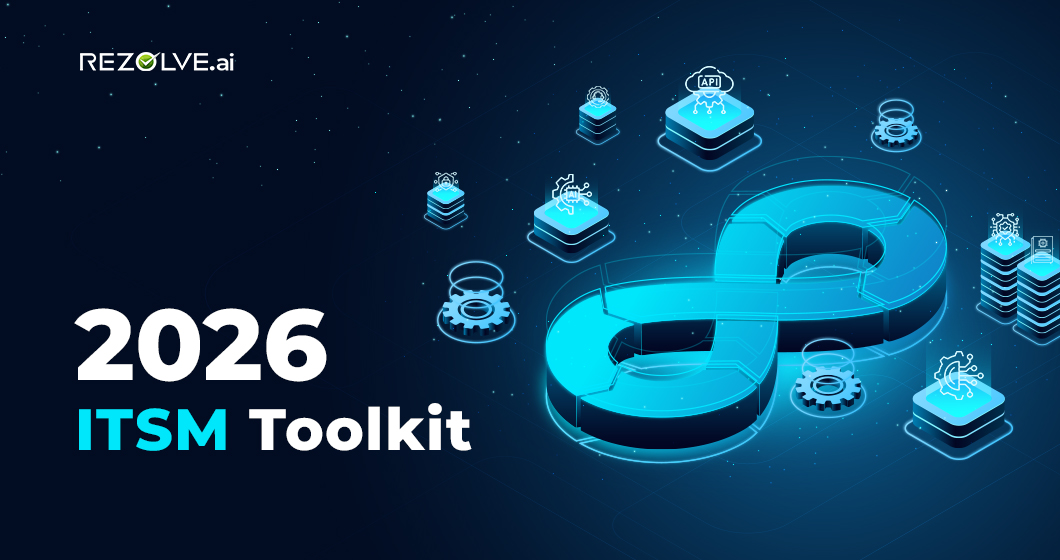Historically, support systems have been reactive responding to issues as they arise. Reactive AI chatbots, while efficient, operate within a traditional framework: the user encounters a problem, initiates contact, and the system resolves it. This model, though functional, is inherently limited by its dependency on user action.
Proactive AI chat assistants, on the other hand, represent a paradigm shift. These systems leverage advanced analytics, contextual awareness, and predictive intelligence to anticipate user needs and intervene before issues escalate. Imagine an AI assistant that notifies users of an impending service disruption, recommends preemptive actions, or resolves potential bottlenecks in workflows without waiting for the user to flag a problem.
This transition from reactive problem-solving to proactive prevention is not merely a technological upgrade; it’s a redefinition of user experience.
.avif)
Why It Matters Now?
The demand for proactive AI is growing as businesses and consumers alike crave seamless, intuitive interactions. The rise of hybrid work environments, complex IT infrastructures, and diverse customer needs has created a perfect storm for innovation in AI-driven support. In customer service, the shift is critical to delivering anticipatory experiences that enhance satisfaction and loyalty. Similarly, IT support teams now grapple with increasingly complex systems that necessitate proactive monitoring and resolution to maintain operational continuity.
Users have grown to expect instant solutions, and the gap between expectations and reality often results in dissatisfaction. Reactive systems, while still valuable, fall short of delivering the frictionless experiences modern consumer's demand. Proactive AI bridges this gap by reducing delays, preventing frustration, and creating a sense of trust that keeps users engaged.
Overview of this Article
This article explores the journey from reactive support systems to proactive AI chat assistants. By examining their differences, core functionalities, and applications, we aim to uncover how proactive AI is transforming industries. For businesses considering this transition, understanding the benefits, challenges, and strategies of proactive AI will illuminate the path forward.
Understanding Proactive AI Chat Assistants
.avif)
What Are Proactive AI Chat Assistants?
Proactive AI chat assistants are intelligent systems designed to anticipate and address user needs before they surface as explicit problems. Unlike their reactive counterparts, which wait for user queries, proactive systems identify potential issues, analyze user behavior, and intervene preemptively. This proactive functionality is powered by advanced data analytics, machine learning, and real-time monitoring.
For example, consider a retail platform where an AI assistant detects that a user has abandoned their shopping cart multiple times. Instead of waiting for the user to seek help, the assistant sends a personalized message helping with completing the purchase or addressing potential concerns. In IT environments, a proactive assistant might predict a server outage based on usage patterns and notify administrators with actionable steps to prevent downtime.
Core Features of Proactive AI
.avif)
- Predictive Analytics and Data-Driven Insights: Proactive AI relies on vast amounts of data to identify patterns and predict future behaviors or issues. Machine learning algorithms analyze historical trends, user activity, and contextual signals to deliver timely interventions.
- Contextual Understanding and User Behavior Monitoring: These assistants excel at understanding the nuances of user intent and behavior. By monitoring real-time interactions, they provide solutions that feel personalized and relevant.
- Multi-Channel Communication and Seamless Integration: Proactive systems integrate across platforms—email, chat, mobile apps, and even IoT devices—ensuring that users receive support on their preferred channels without interruptions.
Benefits of Proactive AI Chat Assistants
- Enhanced User Satisfaction: By addressing issues before they disrupt workflows or experiences, proactive AI fosters trust and loyalty. Users feel valued when their needs are anticipated and met without effort.
- Reduced Ticket Volume and Operational Costs: Proactive systems significantly reduce the number of support tickets by resolving issues preemptively. This decreases the workload for human agents, allowing them to focus on more complex problems.
- Building Trust Through Personalization: Personalized, timely interventions create a sense of care and attention, strengthening relationships between users and organizations.
Reactive AI Support: Traditional Problem Solving
What Is Reactive Support?
Reactive AI support has been the cornerstone of modern chatbots, designed to respond to user-initiated interactions. These systems are rule-based or leverage natural language processing (NLP) to provide answers, troubleshoot issues, or guide users through workflows. Common applications include resolving billing inquiries, answering FAQs, and offering step-by-step troubleshooting assistance.
For instance, a reactive chatbot might assist a user struggling to reset their password or explain discrepancies in an invoice after the user raises a query. While this approach is effective for immediate problem-solving, it often relies on the user recognizing the issue and reaching out for support.
.avif)
Strengths of Reactive AI Support
- Effective for Specific, Immediate Concerns: Reactive systems excel at addressing clear, straightforward user queries, ensuring efficient and timely resolutions.
- Simple Deployment: Reactive AI chatbots are easy to deploy and cost-effective, making them ideal for businesses with limited resources or basic support needs.
- Familiarity: Users are accustomed to reactive systems, making them comfortable and straightforward to interact with.
Limitations of Reactive Support
- Resolution Over Prevention: Reactive systems focus solely on resolving existing problems rather than preventing them, which can lead to repetitive issues and inefficiencies.
- User-Initiated Interactions: Dependence on users to identify and report issues often results in delays and frustration.
- Transactional Nature: Repetitive, transactional interactions may lead to user dissatisfaction, particularly if the system fails to address underlying needs comprehensively.
Key Differences Between Proactive and Reactive Approaches
.avif)
Customer Experience
- Proactive: Anticipates user needs and addresses them before they escalate into problems. This approach enhances user satisfaction by minimizing disruptions and demonstrating attentiveness.
- Reactive: Waits for the user to initiate contact, often leading to delays in resolution and potential frustration.
Operational Efficiency
- Proactive: Reduces workload on support teams by preemptively resolving recurring issues. This approach streamlines operations, allowing human agents to focus on high-value tasks.
- Reactive: Requires constant monitoring and response, leading to inefficiencies in handling repetitive inquiries.
Technology Requirements
- Proactive: Demands advanced infrastructure, including predictive analytics, machine learning algorithms, and robust data integration. These systems must continuously learn from user interactions to remain effective.
- Reactive: Relies on established technologies like rule-based responses or NLP to address immediate user needs. While simpler to implement, this approach lacks the sophistication to anticipate future problems.
Use Cases for Proactive AI Chat Assistants
Proactive AI chat assistants have the potential to transform how businesses interact with their customers and manage internal systems. By anticipating user needs and addressing potential problems before they occur, these systems create more seamless and efficient interactions. Let’s examine how proactive AI is revolutionizing key industries.
Customer Support
Proactive AI in customer support identifies patterns in historical data to anticipate user needs. For instance, if a customer’s subscription is nearing its renewal date, a proactive assistant can send a reminder or offer guidance on upgrading their plan. Similarly, if a user frequently encounters account login issues, the system can preemptively provide troubleshooting steps or alternative access options.
Rezolve.ai, with its Agentic SideKick 3.0, excels in this domain by delivering real-time support within platforms like Microsoft Teams. For IT Service Management (ITSM) and HR needs, Rezolve.ai leverages predictive insights to reduce support ticket volume and provide seamless, in-the-flow assistance, making it a pioneer in proactive customer engagement.
IT and System Monitoring
Proactive AI is essential in IT environments, where downtime or system failures can disrupt operations. By monitoring system performance in real time, proactive assistants can detect anomalies or potential outages before they impact users. For example, an AI assistant could alert administrators to increasing server loads and recommend preemptive scaling to avoid downtime.
Rezolve.ai’s Agentic SideKick 3.0 demonstrates leadership here by proactively identifying IT issues and offering tailored solutions within collaborative environments. By integrating predictive analytics with automated workflows, it ensures smoother operations and fewer disruptions, cementing its role as a trusted ITSM tool.
E-Commerce and Retail
In the fast-paced world of e-commerce, proactive AI assistants enhance user experiences by offering personalized product recommendations based on browsing behavior or cart activity. For example, if a customer frequently searches for fitness gear, the AI can recommend complementary items like protein shakes or exercise bands, increasing upsell opportunities.
These proactive capabilities reduce cart abandonment rates and improve conversion metrics, a strategy many leading retail platforms now prioritize to remain competitive.
Healthcare
The healthcare industry benefits immensely from proactive AI chat assistants, especially in patient engagement and adherence to treatment plans. For example, an AI assistant can send medication reminders or preemptive alerts about upcoming appointments, ensuring better patient compliance and reducing missed visits.
Proactive systems in healthcare also streamline administrative tasks, such as notifying patients about insurance updates or follow-up requirements, making the healthcare experience less stressful and more accessible.
Finance
Proactive AI chat assistants are transforming the finance sector by monitoring user transactions and offering timely advice. For instance, they can flag suspicious activity in real-time, helping users prevent fraud. Similarly, these assistants can analyze spending patterns and offer tailored financial advice, such as budget optimization or investment opportunities.
By empowering users with actionable insights, proactive AI builds trust and loyalty, particularly in an industry where security and reliability are paramount.
Benefits of Transitioning to Proactive AI
.avif)
For Users
Proactive AI creates faster, smoother, and more personalized experiences. Users no longer need to initiate requests or troubleshoot issues themselves. Instead, the system intervenes preemptively, resolving problems before they disrupt workflows or daily activities. This leads to fewer frustrations and a greater sense of satisfaction.
For Businesses
For organizations, proactive AI delivers tangible advantages:
- Cost Savings: Reduced ticket volumes mean fewer resources are required for support, lowering operational costs.
- Customer Retention: By anticipating and addressing user needs, businesses create loyal customers who value seamless experiences.
- Brand Differentiation: Companies that adopt proactive AI position themselves as forward-thinking and customer-centric, giving them a competitive edge.
For Support Teams
Proactive AI lightens the load on support teams by automating repetitive tasks and addressing common problems preemptively. This allows human agents to focus on more complex, high-value interactions, enhancing overall team efficiency and job satisfaction.
Challenges of Implementing Proactive AI
Data Collection and Privacy
Proactive AI relies on extensive data to function effectively. This raises concerns about data privacy and compliance with regulations such as GDPR and CCPA. Businesses must strike a delicate balance between personalization and respecting user privacy.
Technical Complexity
Building a proactive AI system requires robust infrastructure, including predictive models, machine learning algorithms, and seamless integration with existing platforms. These technical demands can pose challenges, particularly for organizations with limited resources or legacy systems.
User Acceptance
Proactive AI, if not implemented thoughtfully, can come across as intrusive. Users may perceive unsolicited recommendations or alerts as overreach, undermining trust. To mitigate this, businesses must prioritize transparency and demonstrate the value of proactive interactions.
How to Transition from Reactive to Proactive AI
.avif)
Step 1: Understand User Needs
Transitioning begins with analyzing historical data to identify recurring issues and common pain points. By understanding user behavior, organizations can design proactive strategies tailored to their audience.
Step 2: Leverage Predictive Analytics
Investing in advanced predictive models is critical. These systems analyze patterns to anticipate user needs and recommend timely solutions. For example, Rezolve.ai’s predictive capabilities enable seamless support by identifying IT bottlenecks or HR queries before they escalate.
Step 3: Develop Multi-Channel Integration
Proactive AI must communicate across multiple platforms, such as email, chat, and mobile apps. Ensuring consistency in messaging and support across channels enhances the user experience and maximizes engagement.
Step 4: Monitor and Optimize
The journey to proactive AI doesn’t end with deployment. Continuous monitoring and optimization are essential to refine strategies, improve accuracy, and address emerging user needs effectively.
Step 5: Prioritize Transparency
Users need to understand how proactive AI works and why it benefits them. Clear communication about data usage and proactive measures builds trust and mitigates concerns about intrusiveness.
Future Trends in Proactive AI Chat Assistants
AI and IoT Integration
The future of proactive AI lies in integrating with IoT devices. For instance, chat assistants connected to smart home systems could monitor appliance health and recommend maintenance before a breakdown occurs.
Enhanced Personalization
Next-generation AI will delve deeper into individual preferences and contexts, delivering hyper-personalized experiences that feel intuitive and human-like.
Hybrid Models
Combining proactive and reactive approaches will create a balanced support ecosystem. Users will benefit from anticipatory interventions while retaining the ability to seek assistance on demand.
Voice and Visual Proactive Assistants
As AR/VR environments become more mainstream, proactive AI chat assistants will integrate with these technologies to provide immersive, anticipatory support experiences.
Final Thoughts
Proactive AI chat assistants represent the next frontier in customer and IT support, transforming how businesses anticipate and address user needs. Platforms like Rezolve.ai, with its Agentic SideKick 3.0, are already leading the charge by integrating predictive insights into real-time workflows.
By transitioning to proactive AI, organizations can deliver faster resolutions, reduce operational costs, and build lasting trust with users. The future of proactive AI promises even greater personalization, seamless integration, and a blend of proactive and reactive approaches for comprehensive support.
Talk to our experts about how Agentic SideKick can optimize your ITSM and HR workflows for employee support and realizing new ROI - [Book a Call]





.webp)




.jpg)

.png)








.png)